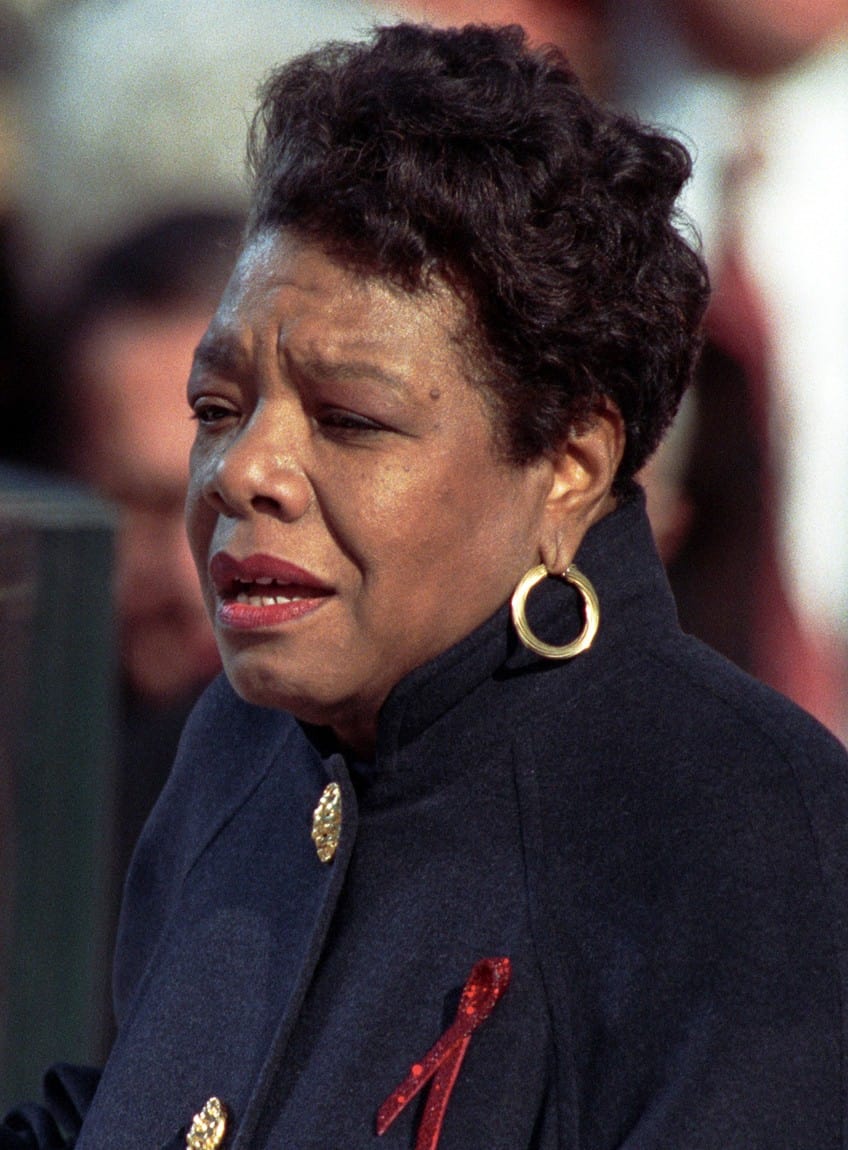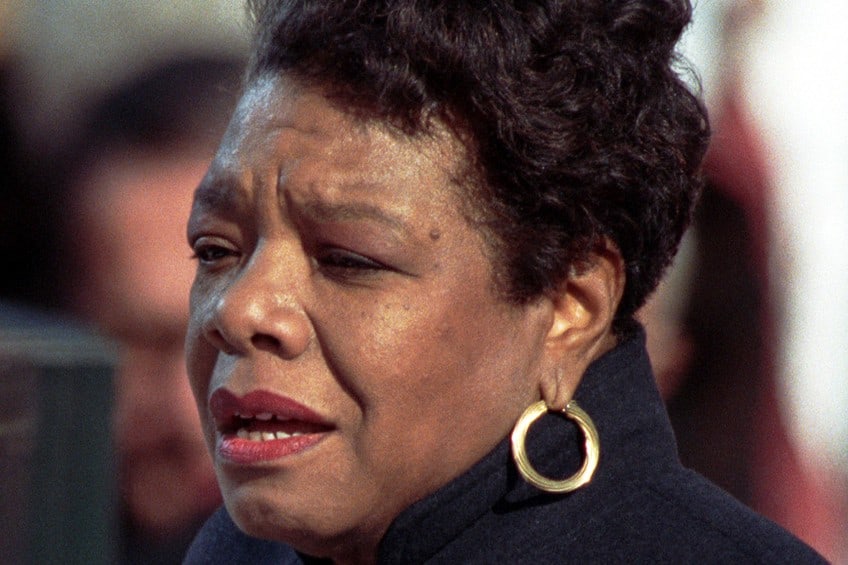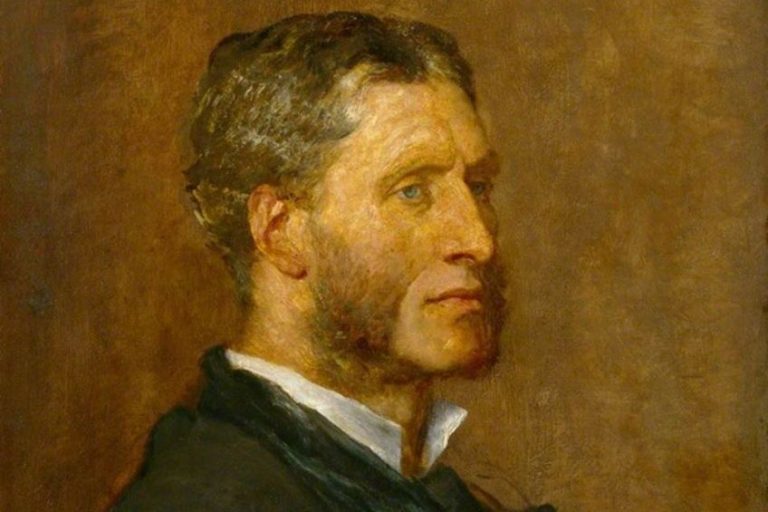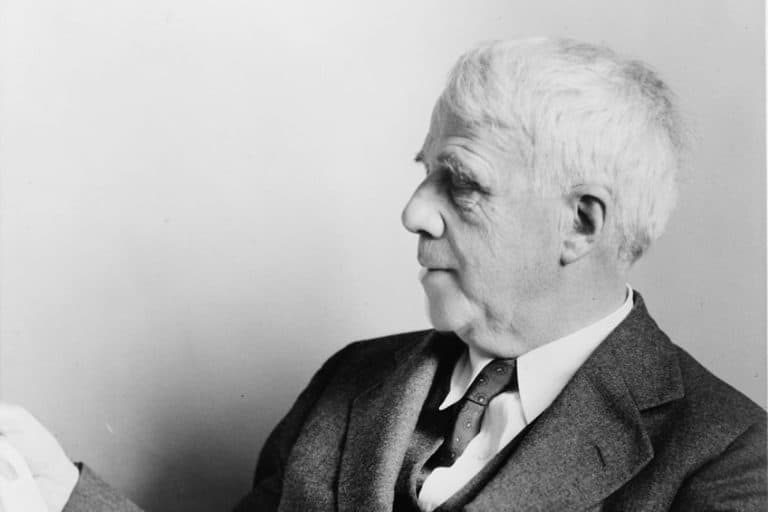“Still I Rise” by Maya Angelou Analysis – Understanding the Poem
Still I Rise is an ideal example of the kind of work that Maya Angelou produced over the course of her life. This is one of the best-known poems that she produced over her long and illustrious career as a writer, which is why we are going to provide a Still I Rise by Maya Angelou analysis in this article. This will entail an in-depth analysis of the poem to explore the Still I Rise meanings that can be determined, alongside some more general points such as the theme of Still I Rise, a brief look at Maya Angelou herself, the poem’s use as a piece of spoken word poetry, and a final Still I Rise summary list for those who need it. This should be useful for anyone who wants to learn more about this fantastic and influential poem!
Still I Rise by Maya Angelou Analysis
| Date Published | 1978 |
| Type of Poem | Lyric poem |
| Rhyme Scheme | Mostly ABCB |
| Meter | Trochaic tetrameter |
| Topic | Self-respect, confidence, and the African American experience |
Still I Rise is one of the most famous poems that Maya Angelou ever wrote, and because of that, many may wish to ask: “What is Still I Rise about in the first place?”. This poem deserves a lengthy, in-depth analysis to examine various parts of the text and how they work with one another to produce the Still I Rise meaning that Angelou may have intended. However, before we get to that part of the article, let’s first have a look at the woman behind the poem that we will soon analyze.
Maya Angelou: The Poet Behind the Words
| Poetic Movement | Non-classifiable |
| Years | 1928 – 2014 |
| Place of Birth | St. Louis, Missouri, United States |
| Known For | I Know Why the Caged Bird Sings (1969) and And Still I Rise (1978) |
Maya Angelou is often considered to be one of the greatest poets of the 20th and 21st centuries. Her work has been profoundly influential on a great many poets and writers. She would become one of the central literary figures in the Civil Rights Movement in the United States, and her work was often concerned with African American people, civil rights, oppression, and rising above it.
Maya Angelou grew up poor and suffered through racial, sexual, and economic oppression, and these hardships influenced much of the work that she produced over her long career.

In addition, she became immensely well-known for her autobiographies, plays, films, children’s books, and much more. She was incredibly accomplished and served as an inspiration to many others. She would eventually pass away in 2014, but her influence and large collection of work have remained to influence others. The last of the figures of her generation is passing away, but the many hardships that they faced paved the way for many who would follow in her footsteps, and today, we will examine one of her best-known and most poignant poems: Still I Rise.
An In-Depth Analysis of Still I Rise by Maya Angelou
It’s time for us to start on our in-depth Still I Rise by Maya Angelou analysis. This analysis will go stanza by stanza to investigate the different ways in which this poet presents the information that she wants to convey to the reader or listener of this poem. It is worth examining a poem on a molecular level because we will only be able to see all the different parts and how they relate to each other when we do so.
Now, before we jump into the first stanza, we should first consider the title of the poem: Still I Rise. Why has this particular title been chosen for this particular poem?

We have not yet read anything in the poem, but if we do know something about the poet, and we have briefly examined her work, we should be able to determine that something like this may be along similar lines to the kind of work that Maya Angelou often wrote. The name also evokes a certain kind of perseverance. It is a statement that implies that the poet has fallen but that she still rises. This is likely metaphorical. So, before we even get started on the poem, we may be able to determine that this poem is about perseverance of some kind. Let’s see if these presumptions about the title are in any way true.
Stanza One
You may write me down in history
With your bitter, twisted lies,
You may trod me in the very dirt
But still, like dust, I’ll rise.
The first line opens with the idea of history, and it makes use of a confrontational tone. The speaker is confronting an invisible subject, and that subject is the kind of person who wants her, or people like her, to fail. They use “bitter” and “twisted” lies when they write about her. The concept of “history” in this case does not necessarily refer to history as it may be taught in school, but rather on an individualized level.
These are the kinds of people who may attack and try to produce a certain kind of image of her for others. They are trying to turn others against her, or even against herself.
The next lines refer to her being in the dirt, and in this instance, “dirt” is obviously used in a metaphorical sense, but it is used in a way that may evoke very real and understandable images of oppression. In many oppressive systems, those who enforce the oppression may, quite literally, push someone into the dirt. As Maya Angelou often wrote about the experiences of African American people in the United States, it makes sense that this kind of imagery would be used. It implies an immoral kind of law enforcement that intentionally oppresses people.
From here, it starts with the concept of rising above it. It states that “like dust”, she will rise above it. In this case, the concepts of “dust” and “dirt” are directly compared to one another. We often use these kinds of terms together, but there is a more positive connotation for dust rather than with dirt. “Dirt” implies something disgusting and dirty. “Dust”, on the other hand, can be linked to more biblical ideas of us coming from dust and returning to dust. This could, therefore, be seen as a kind of biblical metaphor for coming from nothing to become something.
Stanza Two
Does my sassiness upset you?
Why are you beset with gloom?
’Cause I walk like I’ve got oil wells
Pumping in my living room.
This stanza starts the poem’s use of questions. Each of these questions is intended to reinforce some kind of a confrontational view of the subject that the speaker is addressing. We have already noted that the speaker is addressing someone who seeks her oppression, and these questions serve to continue that confrontational tone. The first directly questions whether the sassiness of the speaker upsets them. This is a personalized attack, and it does call to mind the stereotypical way in which many African American women are described as “sassy”.
However, instead of arguing against the idea of being called sassy, the speaker wants to know why this character trait is seen as so negative. It’s a rhetorical question meant to ask why a trait such as this is one that deserves criticism.
The second question, on the other hand, is more focused on the person that is being addressed. It asks why they are the way they are. This section does not act as if the character traits of the speaker are the problem, but rather that the traits of the subject are the problem. They are angry and want others to be oppressed. Why? What is wrong with these people that they would want to hurt someone like the speaker? What has happened in their lives to make them attack someone simply for the crime of living their lives? This can, obviously, be seen, considering the first line’s use of a more racialized question, that these people may be racists or misogynists (or a combination of such bigotries). The people who attack her are those who may not be worthy of any time or attention, but she addresses them regardless of that.
The last two lines make use of enjambment to have them flow into one another as a single statement rather than being read as two separate lines. This allows for a longer thought than many of the previous lines have allowed. This is not a question, but an answer to the questions that have already come through the use of a simile. It states that the answer to those questions is that she acts as if she’s rich as if she’s confident. The wealth connotation comes from the idea of the speaker having “oil-wells” in her home. Anyone who is able to pump oil is clearly someone with money, and having money can often make one very confident.
In this case, she acts as if she has wealth even when she does not. She does not shy away from them and acts in a way that these others would want. She acts as if she is equal to, or even above, them.
Stanza Three
Just like moons and like suns,
With the certainty of tides,
Just like hopes springing high,
Still I’ll rise.
This stanza ditches the question format to instead make use of two similes in a row. It compares her to the moon and the sun, to something certain rather than something that can be questioned. It sees her as possessing hope, and hope is seen as a powerful thing, and it, for the first time, uses the word “still” before the already stated “I’ll rise.” The poem is building to its reinforcement of the rising above oppression that it wishes to explore.
It is setting up the repetition that will lead to the affirmation that is the point of the poem. The next stanza returns to the use of questions.
Stanza Four
Did you want to see me broken?
Bowed head and lowered eyes?
Shoulders falling down like teardrops,
Weakened by my soulful cries?
This stanza, unlike any of the others, makes use of three questions. It wants to reinforce the confrontation that is being levied against the subject of the poem. It asks if the subject wants to see the speaker as someone who has been broken down and someone who has a lowered head and eyes. These two images draw immediate comparisons to oppression, and, considering the one who wrote it and the ideas that will be discussed later, the concept of African American slavery in the United States.
To have someone metaphorically “broken” is to have them be something that has lost their self-respect, their self-confidence, their self-reliance, and so on. Oppression can break people down in this way, and the next line, in which it evokes the image of lowering eyes further implies this concept.
When one is oppressed, one does not look at one’s oppressor. To gaze upon the oppressor is to invite further oppression, as was explored by bell hooks through her concept of the oppositional gaze. One who is oppressed is taught that if one wants to remain as comfortable as possible in oppression, one must not look upon the oppressor. That only makes the oppressor angrier at them.

However, to have one’s head bowed and one’s eyes averted is to treat the oppressor as a god. An oppressor wants to be seen as a god, and this is why the question asks if the oppressive subject wants to see her with “bowed head and lowered eyes”. They want her to be someone who is under them, someone who is afraid to look at them, because when someone is afraid to look at you, you, as an oppressor, can feel that you are superior to them. So, when the speaker refuses to bow her head and avert her gaze, she is challenging what they want from her and all oppressed people. Essentially, she refuses to stay in her place.
The last two lines continue with these questions in a similar vein. They reinforce the idea of the bowed head and averted eyes with the image of slumped shoulders and weakness.
Each of these images evokes someone who has given up. Someone who has accepted their fate. By asking these confrontational questions, we can presume that the speaker has refused to do these things that they are seemingly meant to do, according to the oppressors.
Stanza Five
Does my haughtiness offend you?
Don’t you take it awful hard
’Cause I laugh like I’ve got gold mines
Diggin’ in my own backyard.
The first line, once again, uses a question. This line draws a direct comparison to the idea of her being sassy from an earlier stanza. The idea of “haughtiness” is also one that is stereotypically applied to African American women. She is sassy and haughty, and these positive attributes are something that oppressors don’t like to see. She refuses to act the way she is supposed to act, in their opinion.
She acts as if she is allowed to talk back to them, to refuse to avert her eyes. and to refuse to treat them as her superiors.
The second line is, essentially, a sassy remark. It pokes at the oppressor and states that they shouldn’t “take it awful hard”, and this is a rather condescending statement. The condescension that oppressors aim towards oppressed people is turned on its head here. Rather than them acting as if the oppressed are like children, the stereotypically oppressed are acting as if the oppressors are children. This reinforces the confrontational tone that can be found in Still I Rise.
The final two lines are essentially a rephrasing of the idea of her having “oil-wells” in her home. This time, it uses the image of gold mines, which also produce a wealth-oriented image. However, this wealth is connected, through a simile, to her laugh. She laughs and enjoys herself as if she has wealth and power. She does not, and this angers the oppressor, because she acts as she wants to act and does not pretend that she must hide herself away and be weak in the way that they want her to be weak.
Stanza Six
You may shoot me with your words,
You may cut me with your eyes,
You may kill me with your hatefulness,
But still, like air, I’ll rise.
This stanza makes use of immensely violent imagery. We have already seen that the poem uses slave imagery, although it has yet to directly use that term, but the history of African Americans in the United States was one of slavery followed by racial separation laws followed by a fight for civil rights.
The image of police, and other oppressive groups, fighting against protestors is one that can be seen in the imagery of shooting and cutting used in the first two lines.
These images are used in a metaphorical sense, as the shooting is done with words and the cutting with the gaze of the oppressor. The confrontational tone continues here as it attacks those ideas. It says that the oppressor “may” attempt these things, which also implies that they will not work. They will simply be intended.
The third line veers straight towards death with the idea of them killing her with their hate, and it is difficult to see this kind of hatefulness as applying to anything other than bigotry. However, the stanza ends with another repetition of the “still” and “I’ll rise” ideas.
Stanza Seven
Does my sexiness upset you?
Does it come as a surprise
That I dance like I’ve got diamonds
At the meeting of my thighs?
Once again, this is another question. This one uses the idea of sexiness. This is a concept often associated with women in general, and so the misogyny angle may be stronger than the racial angle in this particular stanza. However, there are many racist archetypes that are used in various literary works, such as the noble savage, and the idea of the highly sexual and alluring exotic woman is one of those archetypes.
She may be evoking that kind of image to attack the puritanism of the oppressors. They do not want her to be sexy. They want her to be afraid of her own sexuality, to be repulsed by it.

Thereafter, the stanza makes use of another metaphor to connect another wealth image with an overtly sexual one. This time, it discusses diamonds, which have long been associated with wealth, but it also states that she has them “at the meeting of my thighs”. This is quite an overt way of referring to female genitalia, and by comparing wealth to her own genitalia, she is confidently asserting and celebrating her own sexuality. She refuses to act as if it is something shameful. She knows she is sexy, and she doesn’t care what the attempted oppressor thinks of that.
Stanza Eight
Out of the huts of history’s shame
I rise
Up from a past that’s rooted in pain
I rise
I’m a black ocean, leaping and wide,
Welling and swelling I bear in the tide.
The second-last stanza ditches the prior quatrain, or four-line, structure and instead intersperses the four standard lines with an affirmation. The first line now directly and overtly mentions the history of the African American people. It uses the alliteration of “huts” and “history” to call attention to the idea of traditional African huts. The kind of huts that African American people were stolen from when they were taken as slaves and shipped across the Atlantic Ocean as if they were objects. The second line states that “I rise”.
The third line further reinforces the historical message. It states that this history is rooted in pain, and the idea of “roots” is a common one in African American literature.
The roots of the slaves were found elsewhere, outside of the United States, and their roots are important. The next line once again repeats the “I rise” statement. The use of this line after two strong and powerful historical statements is confident and confrontational. It does not shy away from the horrors that the African American people, and, by extension, the speaker, have experienced.
The last two lines make use of a metaphor. Prior to this, the structure of the poem had used a simile in this particular place, and so the shift to a metaphorical arrangement is significant. It calls her an ocean. She is a powerful ocean, and words like “leaping”, “wide”, “welling”, and “swelling” make use of rhyme and consonance to directly compare them to one another and to show the power of this ocean.
Stanza Nine
Leaving behind nights of terror and fear
I rise
Into a daybreak that’s wondrously clear
I rise
Bringing the gifts that my ancestors gave,
I am the dream and the hope of the slave.
I rise
I rise
I rise.
Once again, the quatrain structure is gone, but it does still persist in some sense. Four of the lines are longer, while the others are repetitions of the phrase “I rise”. Those four lengthier lines call images of night and day to the fore of the poem. The first line shows the horrors of the metaphorical night that she has left behind in favor of the metaphorical day in which things can be better.
The final two lengthier lines are more overt in their presentation of the African American people. It mentions her ancestors and directly uses the term “slave”. It states that she is what the slaves dreamed and hoped they could one day achieve.
She has her freedom, and no one can take that from her. She refuses the attempts of the oppressors to push her back down. She has her confidence, and she will not back down anytime soon. She has risen above it, and the final three lines reaffirm that.
The last three lines of Still I Rise by Maya Angelou are simply the same statement three times in a row: “I rise”. This repetition serves as a means of reinforcing for both herself and all others, that she has risen above it all. She will not heed the voices of the oppressors. Why would she? Why would she listen to any like that? They are not worth her time or energy, and they can sit around and be angry and furious that someone like her is unafraid of them, but she does not care.
It can also be noted that the last three lines only use a period at the very end of the last line. This implies that these three lines are one sentence and are stated in rapid succession.
They are an affirmation. They are something to say to oneself to remind oneself about how far one has come. The speaker is no longer susceptible to what the oppressors have to say or think. She has risen above. And that has been our in-depth Still I Rise by Maya Angelou analysis.
The Theme of Still I Rise by Maya Angelou
We may have concluded our actual Still I Rise by Maya Angelou analysis, but let’s quickly look at things in a more general sense for a time. Let’s have a look at the theme of Still I Rise by Maya Angelou. However, one cannot truly discuss the “theme of Still I Rise”, as there are actually many different themes that can be seen in the poem. So, let’s briefly discuss some of those themes.
Perhaps the most overwhelming theme that can be found in this poem is concerned with confidence in the face of oppression.
The use of various oppressive ideas and statements has been explored throughout the text, and the in-depth Still I Rise by Maya Angelou analysis section of this article should have provided substantial evidence of that, and those ideas are constantly refuted through a confrontational tone.
The confidence in the confrontational tone is another important aspect of the poem’s theme of confidence. To be confident, one must speak one’s mind and one must not shy away from voicing what needs to be voiced. The poem shows that the speaker, and by extension, those who also try to rise above it, can confidently express themselves and refuse to feel shame or sorrow for who they are.
This leads to the theme of empowerment. This poem is aimed towards marginalized people, but many of the references are directly connected to the experience of African American women. However, anyone who has experienced oppression can draw something from the confidence of the poem, and through that confidence, they can become empowered against the oppression that they have faced in their lives.
Furthermore, the themes of resilience and perseverance operate alongside these empowerment and confidence themes. They strive towards producing dignity and celebration in those who have suffered through oppression in their lives, and it also serves as a means of refusing to be silenced, to live as the oppressor wants them to live. It is a powerful expression of going against certain societal expectations and fighting for what should be yours to possess.

Also, of course, the poem does quite explicitly criticize racism and misogyny. The majority of the critique is focused on the former of these two points. Racism, predominantly the racism experienced by African American people in the United States, is something that Maya Angelou critiques quite heavily in this poem through various confrontational statements.
However, while she may have come from an American perspective, this kind of racism can be found throughout the world, and so it will be an understandable feeling to many around the globe.
Still I Rise As Spoken Word Poetry
While Still I Rise by Maya Angelou can be read as a standard piece of poetry, it has also been used as a piece of spoken word poetry. This means that it has been performed aloud, and it has been performed by Maya Angelou herself. In these kinds of performances, the humorous angle can be of special focus, and the cavalier attitude with which confidence can be produced is on full display.
It is worth seeing Still I Rise performed as spoken word because while reading the poem, it may appear very solemn and confrontational, but it can be read in a far different way.
It can be joyous and fun. The flow of the poem can also be seen far more powerfully when it is performed aloud. However, this poem can be enjoyed when read or heard. Both have their own feelings and tones, and different performances could also capture different feelings and tones than those you may experience when reading it or what Maya Angelou did when performing it.
Still I Rise Summary Points
We have practically reached the end of this analysis, so, before we finish off completely, let’s have a look at a few Still I Rise summary points for those who may need them. These should give a good final summary of aspects of the poem that are worth mentioning:
- The confrontational tone: The poem makes use of a confrontational tone throughout the duration of the poem to directly confront the supposed authority of the oppressive voices that stand against her.
- The repetition of questions: The poem makes use of a constant repetition of confrontational questions that are meant to serve as a means of attacking the voices of the oppressors, and many of these questions are focused on the confident expressions of the speaker.
- The repetition of “still” and “rise”: The poem makes use of the repetition of the phrase “Still I rise”. This can be seen in instances of “still” and “I’ll rise” being connected to one another, and the later extensive repetition of “I rise”. This is the primary message of the poem, and so the use of this expression being reused repeatedly is an important part of the poem.
- The use of similes: The poem makes use of a number of similes, and these similes are generally used as a means of comparing the speaker to something that implies strength, confidence, and wealth. These similes are often used within questions.
With that, we have finished with our Still I Rise summary. These bullet points may be useful to those who need to remember the main points that can be explored and discussed when looking at the Still I Rise meanings that can be explored within this text.
Now that everything is said and done, we have reached the end of our Still I Rise by Maya Angelou analysis. Over the course of this article, we have provided an in-depth analysis of the poem alongside more general discussions of the author behind it all, the theme of Still I Rise, and a few Still I Rise summary points to end off. This should provide you with a good overview of Still I Rise, and the various techniques that are used throughout, and it should all ultimately aid in answering the question: “What is Still I Rise about?”. There are many other Maya Angelou poems out there that are also fantastic examples of her work, but this should be a good one to start with on that journey of discovery.
Frequently Asked Questions
What Is Still I Rise by Maya Angelou?
Still I Rise is a poem by the acclaimed American poet, Maya Angelou. The poem is considered to be one of the most famous of her career and an important text in 20th-century American poetry. It is a lyric poem written in a variable trochaic tetrameter structure with a standard rhyme scheme of ABCB that alters later in the poem. The poem has also become a notable instance of spoken word poetry.
What Is Still I Rise About?
When examining this poem, a Still I Rise by Maya Angelou analysis will reveal that this poem is, at its core, about concepts such as self-respect and confidence. It is written in response to the kind of hostility that she experienced in her life, and like many of her works, it does have certain autobiographical notes to it. The poem has become a powerful example of more confrontational poetry.
Who Was Maya Angelou?
Maya Angelou was one of the most famous poets of the 20th century. However, she is known for far more than only her poetry. Her memoirs have become some of the most important of her works, and she was also a notable and important figure in civil rights in the United States. Her works have become immensely influential, and many of them are taught in schools and universities around the world to this day.
What Else Did Maya Angelou Write?
Maya Angelou wrote many different texts over the course of her life. However, some of the most famous things she wrote included memoirs like I Know Why the Caged Bird Sings (1969) and poetry collections like And Still I Rise (1978). She was also known for writing a great many other works over her life, including plays and children’s books. Her impressive output has led to her becoming one of the most acclaimed American writers of the 20th century.
What Is the Difference Between And Still I Rise and Still I Rise?
The difference between these two texts is quite a major one. However, their similarity in name can make it difficult to tell which is which. Still I Rise is a poem by Maya Angelou, whereas the poetry collection is known as And Still I Rise, meaning that the first is a poem and the second is a collection. To make it a little more complicated, the poem is found within that collection. The addition of the conjunction and signifies the collection over the poem. However, the theme of Still I Rise and the collection is similar to one another.
Justin van Huyssteen is a freelance writer, novelist, and academic originally from Cape Town, South Africa. At present, he has a bachelor’s degree in English and literary theory and an honor’s degree in literary theory. He is currently working towards his master’s degree in literary theory with a focus on animal studies, critical theory, and semiotics within literature. As a novelist and freelancer, he often writes under the pen name L.C. Lupus.
Justin’s preferred literary movements include modern and postmodern literature with literary fiction and genre fiction like sci-fi, post-apocalyptic, and horror being of particular interest. His academia extends to his interest in prose and narratology. He enjoys analyzing a variety of mediums through a literary lens, such as graphic novels, film, and video games.
Justin is working for artincontext.org as an author and content writer since 2022. He is responsible for all blog posts about architecture, literature and poetry.
Learn more about Justin van Huyssteen and the Art in Context Team.
Cite this Article
Justin, van Huyssteen, ““Still I Rise” by Maya Angelou Analysis – Understanding the Poem.” Art in Context. October 4, 2023. URL: https://artincontext.org/still-i-rise-by-maya-angelou-analysis/
van Huyssteen, J. (2023, 4 October). “Still I Rise” by Maya Angelou Analysis – Understanding the Poem. Art in Context. https://artincontext.org/still-i-rise-by-maya-angelou-analysis/
van Huyssteen, Justin. ““Still I Rise” by Maya Angelou Analysis – Understanding the Poem.” Art in Context, October 4, 2023. https://artincontext.org/still-i-rise-by-maya-angelou-analysis/.









